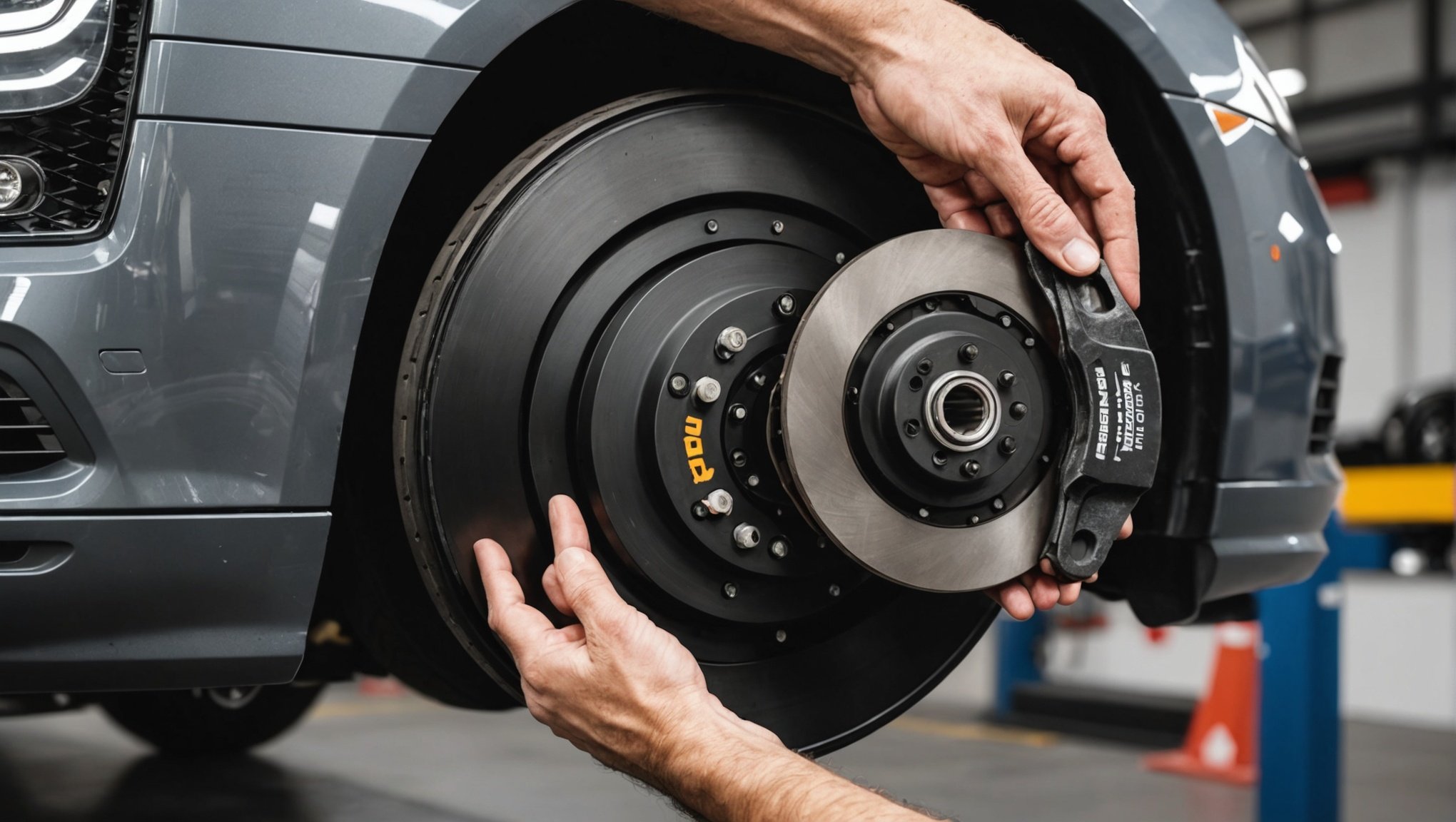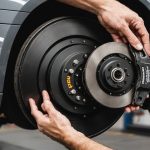Upgrading to ceramic brake pads can dramatically enhance your vehicle's performance. However, without mastering your braking technique, these benefits may not be fully realized. Adjustments in your braking style are essential to ensure optimal results. Understanding how ceramic pads operate differently from traditional ones will empower you to improve stopping power and vehicle responsiveness. Explore key techniques and adjustments that can elevate your driving experience and maximize the advantages of your new braking system. This transformation not only serves safety but can also enhance overall enjoyment on the road.
Understanding Ceramic Brake Pads
Ceramic brake pads are a popular choice among drivers seeking a blend of performance, longevity, and noise reduction. Unlike traditional brake pads, which are typically made from organic or metallic materials, ceramic brake pads are composed of a dense ceramic compound, often mixed with copper fibres. This composition offers several advantages, including quieter operation and less wear on brake rotors.
Also read : How should you approach driving on UK roads during a storm?
When comparing ceramic brake pads to traditional types, there are notable differences. Ceramic pads produce less dust, which means cleaner wheels and longer-lasting brake components. Additionally, they provide a consistent braking feel across a wide range of temperatures, making them reliable in various driving conditions. However, they may not offer the same level of raw stopping power as metallic pads, which can be a consideration for high-performance vehicles.
Several factors influence the performance of brake pad types. These include the driving environment, vehicle weight, and individual driving habits. For instance, urban drivers who frequently engage in stop-and-go traffic might benefit more from the durability and low noise levels of ceramic pads. Conversely, those who drive in mountainous regions might prefer the enhanced grip of metallic pads. Ultimately, understanding these brake pad differences can help drivers make informed choices tailored to their specific needs.
Also read : Comparing Rear-View Mirror Adjustments: A Convertible vs. Sedan Experience
Adjusting Your Braking Technique
When upgrading to ceramic brake pads, it's essential to consider a braking technique adjustment. These pads can alter your vehicle's braking dynamics, making it crucial to adapt your approach for optimal performance.
One of the primary changes involves understanding the braking distance. Ceramic pads, known for their consistent performance, may require a slightly longer distance to come to a complete stop compared to metallic pads. This is due to their unique composition, which focuses on smooth operation rather than raw stopping power. Therefore, it's advisable to increase your following distance, particularly in high-speed or emergency situations.
To achieve smooth braking, practice gentle and progressive pressure on the brake pedal. This technique not only maximises the pads' efficiency but also reduces wear on the brake rotors. It's beneficial to familiarise yourself with the new feel of the brakes in a controlled environment before tackling everyday driving conditions.
Adapting your braking technique ensures you harness the full benefits of ceramic pads, such as reduced noise and cleaner wheels, while maintaining safety. By understanding and adjusting to these changes, drivers can enjoy a more comfortable and reliable driving experience.
Common Issues with Ceramic Brake Pads
When using ceramic brake pads, some drivers might encounter issues that require attention. Identifying these ceramic brake pad issues early can save time and ensure optimal performance.
One frequent problem is brake noise. Although ceramic pads are designed to be quieter, improper installation or adjustment can lead to squealing or grinding sounds. This noise often arises from misalignment or the presence of debris between the pad and rotor. To resolve this, ensure that the pads are correctly aligned and clean any debris from the braking system.
Another issue is uneven wear, which can occur if the pads are not properly bedded during installation. This can lead to diminished braking efficiency and increased noise. To troubleshoot this, check for signs of uneven wear and re-bed the pads if necessary.
Signs of improper installation include vibrations or a spongy brake pedal feel. These symptoms suggest that the pads may not be seated correctly or that there is air in the brake lines. Addressing these issues promptly by checking the installation and bleeding the brake lines can restore performance.
By understanding and addressing these common ceramic brake pad issues, drivers can maintain a smooth and quiet braking experience.
Mistakes to Avoid
When using ceramic brake pads, it's crucial to be aware of braking mistakes that can impact brake performance. Understanding these common errors helps maintain the effectiveness and longevity of your braking system.
One prevalent mistake is improper bedding. Failing to bed in new ceramic pads correctly can lead to uneven wear and reduced stopping power. To avoid this, follow the manufacturer's bedding procedure, which usually involves a series of moderate stops to transfer an even layer of pad material onto the rotor.
Another error is overloading the vehicle. Carrying excessive weight can strain the brake system, leading to overheating and diminished performance. Ensure your vehicle's load does not exceed the recommended capacity to maintain optimal braking efficiency.
Drivers often overlook the importance of regular maintenance checks. Neglecting to inspect brake components can result in unnoticed wear or damage, compromising safety. Regularly check for signs of wear, such as thinning pads or grooved rotors, and replace components as needed.
Lastly, avoid abrupt braking in non-emergency situations. Sudden stops can cause excessive heat build-up, impacting the brake pads' performance. Instead, apply progressive pressure to the brake pedal, allowing for smoother stops and prolonging the life of your ceramic pads.
Maintenance Tips for Longevity
Proper brake pad maintenance is essential for ensuring the longevity and performance of your ceramic brake pads. Regular attention and care can significantly extend the life of your braking system.
Begin by adhering to a routine inspection schedule. Check your brake system every 12,000 miles or at least once a year. This inspection should include assessing the thickness of the brake pads and examining the rotors for any signs of wear or damage. Early detection of wear can prevent more severe issues from developing.
Keeping brake components clean is crucial for optimal performance. Dirt and debris can accumulate and cause unnecessary friction or noise. Use a brake cleaner spray to gently remove any build-up from the pads and rotors, ensuring a smooth and quiet braking experience.
Replacement intervals for ceramic brake pads vary based on driving habits and conditions. However, a general guideline is to replace them every 30,000 to 70,000 miles. Always consult your vehicle's manual or a professional mechanic for specific recommendations tailored to your vehicle's needs.
By integrating these performance tips into your routine, you can maintain the efficacy and safety of your brake system, ensuring a reliable and smooth driving experience.
Enhancing Braking Efficiency
Improving braking efficiency is crucial for a safer and more responsive driving experience. Several performance upgrades and driving techniques can help achieve this goal.
Firstly, adopting effective driving habits plays a significant role in maximising brake efficiency. Practising smooth and gradual braking reduces stress on the brake system and ensures consistent performance. Avoiding abrupt stops and maintaining a safe following distance can also prevent excessive wear on the pads and rotors.
Incorporating performance upgrades can further enhance braking efficiency. High-quality brake fluid with a higher boiling point can improve brake responsiveness, especially in high-temperature conditions. Additionally, upgrading to slotted or drilled rotors can improve heat dissipation, reducing the risk of brake fade during intense braking situations.
To complement ceramic brake pads, consider installing performance calipers. These calipers provide a stronger clamping force, ensuring efficient braking even under heavy loads. Moreover, investing in stainless steel brake lines can enhance pedal feel by reducing flex and maintaining consistent pressure.
By integrating these techniques and upgrades, drivers can significantly improve their vehicle's braking efficiency, ensuring a smoother and more reliable driving experience. Adopting these strategies not only enhances safety but also prolongs the life of the braking system.
















